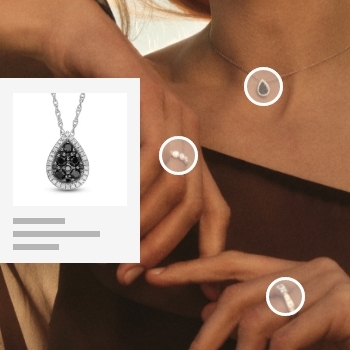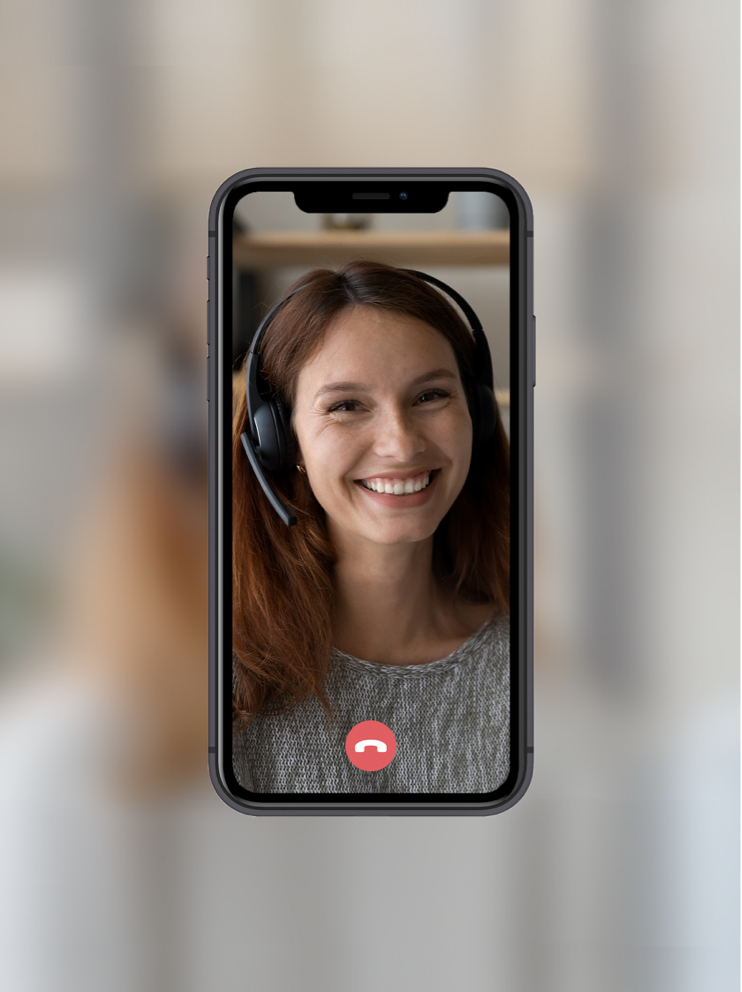Diamond Guide
As an iconic symbol of lasting love, every diamond is unique and beautiful in its own way. From the objective value of a diamond to the unique features that reflect your personal style, there is a lot to consider before you make a purchase. Our diamond guide is here to help you navigate your options and find a diamond you’ll love.
Diamond Cut
Cut refers to a stone’s shape, facet, and polish. Sometimes diamonds are cut so they’re heavier, thus fetching more value for their carat weight. Sometimes they’re cut to hide or minimize inclusions by expert diamond cutters skilled at bringing the brilliance out of each diamond they work with.
In general, there are three factors that determine a diamond's cut quality:
In general, there are three factors that determine a diamond's cut quality:
- Proportion: The relative size and angle of each diamond facet
- Symmetry: The precision of the cut design, especially the facets
- Polish: The smoothness and luster of the diamond's surface
Emerald Cut Diamonds
Often referred to as a “step-cut” for its wide, flat plane with edges that look like stairs, an emerald-cut diamond is usually a rectangular shape with cut corners. The unique shape gives a “hall of mirrors” effect and works well with Art Deco and vintage-inspired jewellery.
Radiant Cut Diamonds
With 70 facets, a radiant-cut diamond shines with breathtaking sparkle and brilliance. Its square shape is inspired by the princess cut but the cropped corners make it a little more durable. Perfect for engagement rings and other romantic jewellery, a radiant cut is a newer cut that is steadily gaining in popularity thanks to its elegance.
Pear Cut Diamonds
Combining features from the round and marquise shapes, a pear-cut diamond is one of the only asymmetrical options featuring a tapered point on only one end. Rare and unique, a pear-cut is perfect for anyone who appreciates timeless elegance with a contemporary flair.
Heart Cut Diamonds
Most often featured in a solitaire setting, heart-cut diamonds are a unique and romantic choice. The complex shape requires extreme skill and precision to cut properly and works best with larger diamonds to ensure balance and symmetry. Quality heart-cut diamonds are rare and can be more expensive than other more common cuts.
Cushion Cut Diamonds
Once the most popular cut of them all, a cushion-cut diamond is a classic choice that is now considered an “antique cut”. With its vintage flair, a cushion cut has a number of variations that highlight scintillation and sparkle. Choosing the right cushion cut option is all about personal preference.
Oval Cut Diamonds
One of the oldest and most elegant options, an oval-cut diamond is a practical choice for anyone with an active lifestyle. The absence of sharp corners makes an oval cut less likely to snag or chip and the elongated shape also tends to appear larger than it actually is. Classic and feminine, oval cut is for anyone with a minimalist style.
Princess Cut Diamonds
As one of the most popular cuts for engagement rings, a princess-cut diamond is a modern, sophisticated choice that offers both brilliance and sparkle. Its versatility makes a princess cut ideal for a wide range of settings and it is often paired with an infinity band. The sleek and classic look is also popular for diamond stud earrings.
Marquise Cut Diamonds
Once reserved for royalty, a marquise cut is an elongated “eye shape” featuring a point on either end and one of the largest surface areas of any diamond cut. Ideally, the dramatic and unique marquise cut will have perfect symmetry and be set with prongs to protect its points from chipping.
Round Cut Diamonds
The classic round cut is still the most popular cut for many types of jewellery including engagement rings, diamond stud earrings, and diamond pendants. Known for their fire, brilliance, and scintillation, a round cut has the ability to bring out the best in a diamond which is why it continues to be a classic choice.
Diamond Carats
Simply put, carat is the weight of a diamond. A larger carat weight is often associated with a higher cost, but carat is only one factor determining the cost of a diamond. The other 3Cs (cut, color, clarity) can change the value drastically. One carat is 200 milligrams and each carat is subdivided into 100 “points” which allows for precise measurements down to the hundredth decimal place.
What is an Enhanced Diamond?
An enhanced diamond is a heavily included or low-colour stone that has been treated to improve colour or clarity. These treatments can include laser drilling and fracture filling to improve clarity and high pressure, high temperature (HPHT) treatments to improve colour. While these treatments can improve the appearance of a diamond, they aren’t always permanent, and their effects can fade over time.
Enhanced diamonds sell for approximately 30-50% less than a natural diamond, which is a positive for anyone on a budget. Keep in mind that the long-term value of an enhanced diamond will also be lower than a natural diamond that didn’t undergo any treatments.
Enhanced diamonds sell for approximately 30-50% less than a natural diamond, which is a positive for anyone on a budget. Keep in mind that the long-term value of an enhanced diamond will also be lower than a natural diamond that didn’t undergo any treatments.
VVS and VS Diamonds
VVS and VS are grades on the GIA Diamond Clarity Grade scale. VVS stands for very, very small inclusions which means even a qualified observer would have a hard time spotting any flaws under a microscope. VS stands for very small inclusions which means there may be several very small flaws or a couple somewhat larger ones.
Generally, the higher the clarity grade, the more valuable the diamond. Choosing a lower clarity diamond paired with a cut that strategically hides any obvious inclusions is a smart way to get a diamond that appears eye-clean but may not be as rare as a stone with a VVS or VS clarity grade.
Generally, the higher the clarity grade, the more valuable the diamond. Choosing a lower clarity diamond paired with a cut that strategically hides any obvious inclusions is a smart way to get a diamond that appears eye-clean but may not be as rare as a stone with a VVS or VS clarity grade.
How to Clean Diamond Jewellery
Diamonds may be a 10 on the Mohs hardness scale, but over time they can still pick up nicks and scratches that will erode their beauty. Ideally, when buying diamond jewellery you’ll take your lifestyle into consideration and choose a cut and setting that protects the stone.
Diamond jewellery can be cleaned with warm water, mild soap and a soft brush. Make sure to take off your diamond rings if you’re doing any hands-on work or when you’re applying and lotions or creams. When you’re not wearing it, store diamond jewellery in felt-lined boxes and pouches to avoid scratches and chips.
If your diamond jewellery is damaged, take it in for repairs as soon as you can. The last thing you want is for the stone to fall out because of a bent prong or loose setting. As long as you take an active role in caring for your diamond jewellery, it should last you for decades.
Diamond jewellery can be cleaned with warm water, mild soap and a soft brush. Make sure to take off your diamond rings if you’re doing any hands-on work or when you’re applying and lotions or creams. When you’re not wearing it, store diamond jewellery in felt-lined boxes and pouches to avoid scratches and chips.
If your diamond jewellery is damaged, take it in for repairs as soon as you can. The last thing you want is for the stone to fall out because of a bent prong or loose setting. As long as you take an active role in caring for your diamond jewellery, it should last you for decades.
Lab-Created Diamonds
Lab-created diamonds, also known as man-made or lab-grown diamonds, have the exact same physical and chemical properties as natural diamonds. The only difference is the location and the time they took to form. Lab-created diamonds are grown in as little as a few weeks in a controlled setting where they can be engineered with specific features in mind. A natural diamond takes billions of years to form deep under the Earth’s surface.
While a natural diamond is rarer and more valuable, there are a few benefits to choosing a lab-created diamond. The cost will be significantly lower for a lab-created stone that appears exactly the same as its natural counterpart. Like all of our natural diamonds, lab-created diamonds are conflict free.
While a natural diamond is rarer and more valuable, there are a few benefits to choosing a lab-created diamond. The cost will be significantly lower for a lab-created stone that appears exactly the same as its natural counterpart. Like all of our natural diamonds, lab-created diamonds are conflict free.
Ready to shop? We have a wide range of diamond jewellery for anyone’s style and budget.





 They will be on video but won't see you.
They will be on video but won't see you. Make sure to enable your mic if prompted.
Make sure to enable your mic if prompted. Language:
Language:

